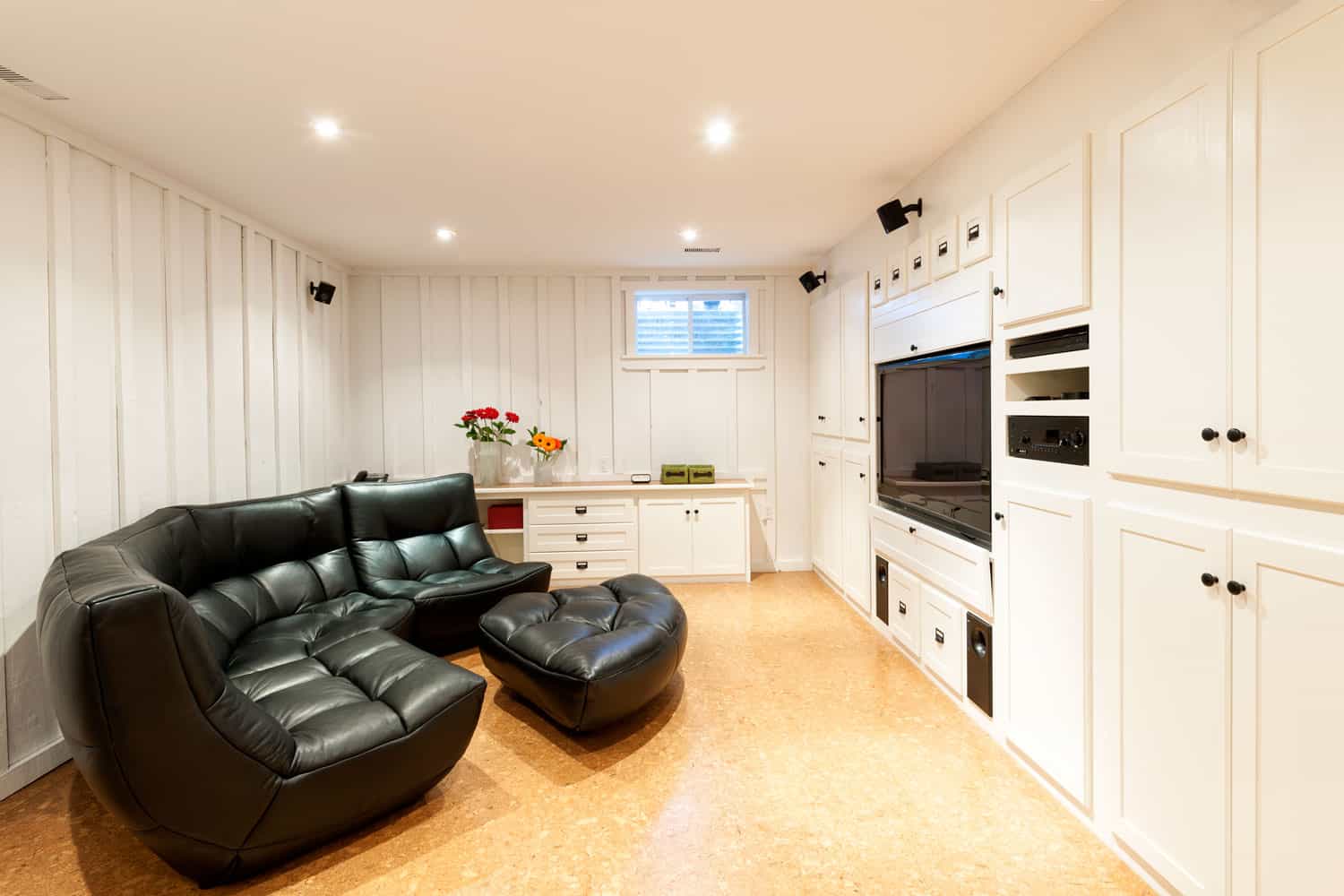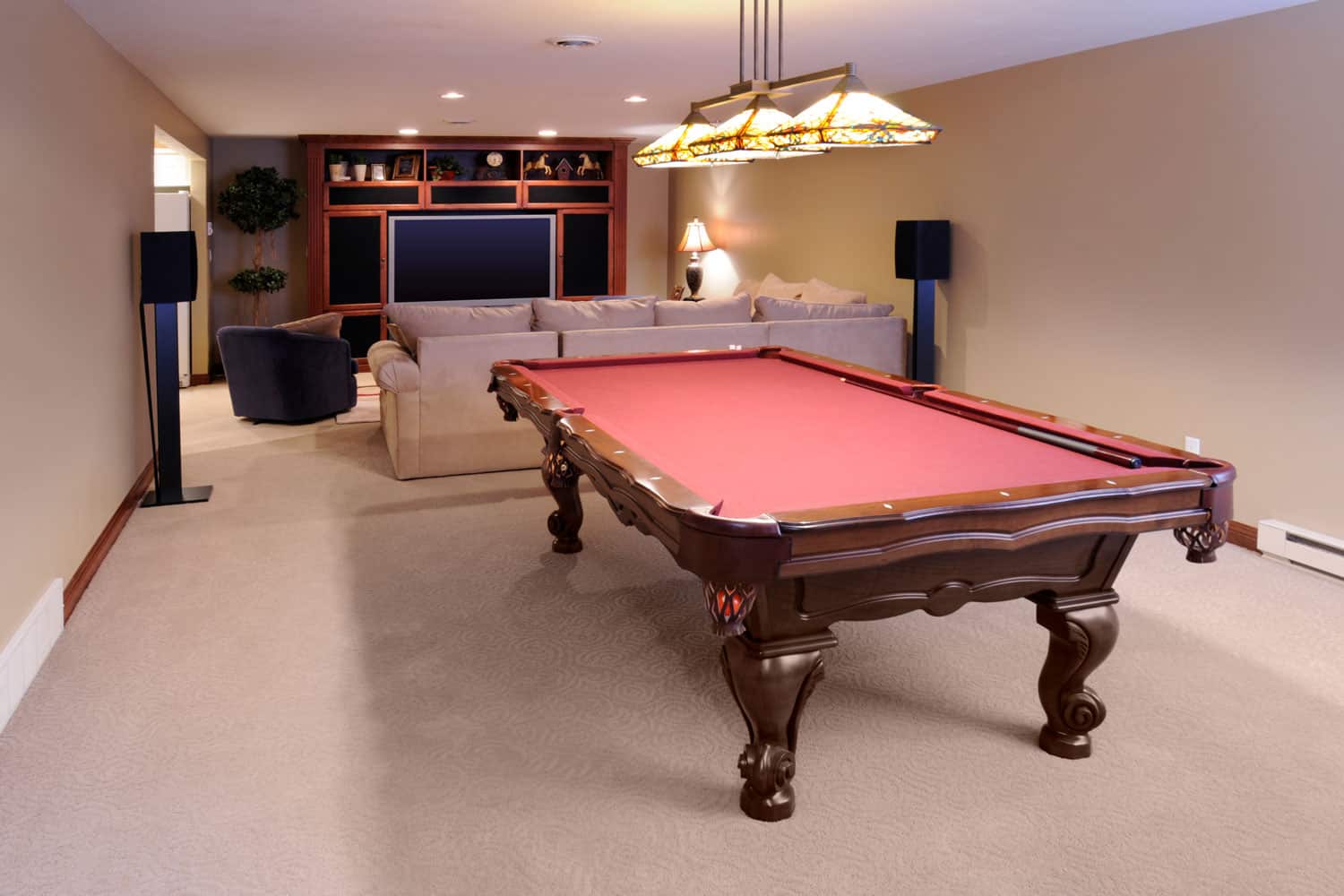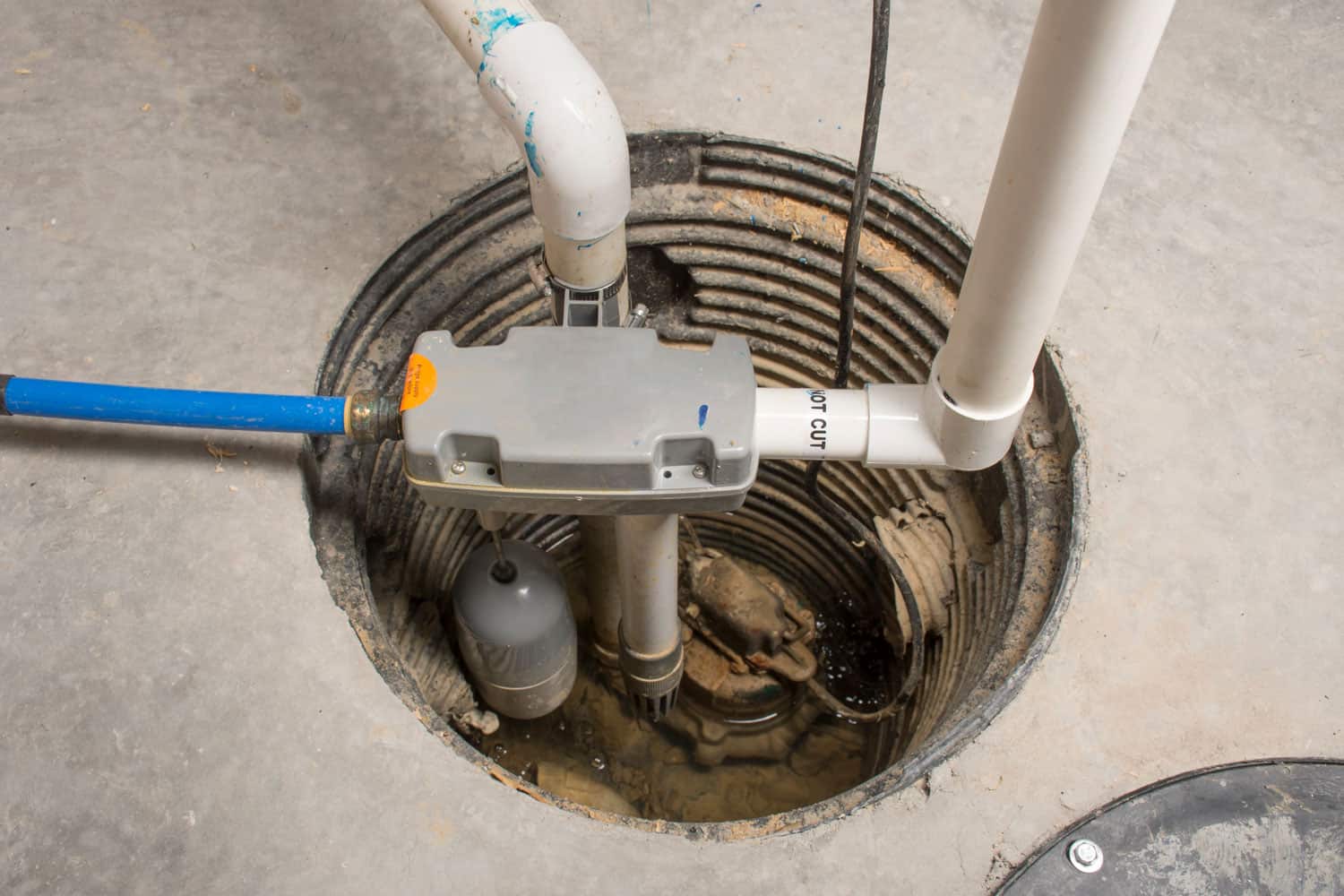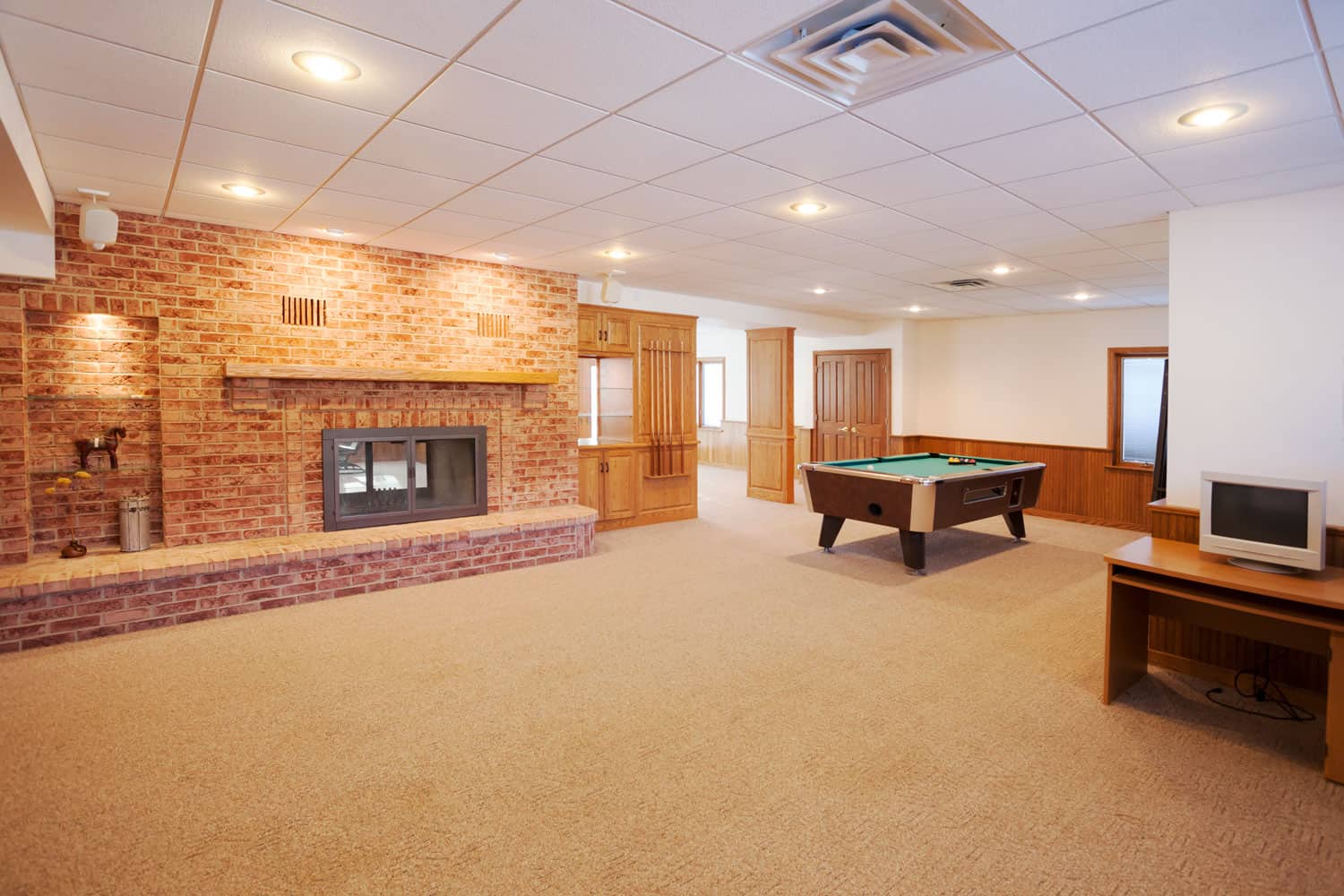Space is ever limited, and our homes are certainly no exception. You might be shopping around for a new home or maybe looking down between your toes in a home you already own. But what you want to know is, can you finish a basement with low ceilings? You have come to the right place! We pull on experience and research to thoroughly answer that question here.
You can finish a basement with low ceilings. However, before embarking on this potentially difficult venture, keep the following in mind:
- Local Building Code
- Ceiling Height
- Egress
- Appliance Health and Safety
- Livability
- Price
Keep reading the rest of this post for details on each of the above bullet points. We will cover all you need to consider when deciding to finish an old low hanging basement. In addition, we cover the answers to several useful related questions.

Contents
How To Finish A Basement With Low Ceilings
Local Building Code
Whenever you consider finishing a room in a home, whether a basement, attic, garage, or storage area, several building code subjects are at play. The most difficult code requirements for basements are ceiling height, egress, and appliance health and safety. We will cover each of these building code issues below.
This guide is meant to get you started, but keep in mind that building codes change slightly and even dramatically from place to place and city to city. The best bet to ensure that your remodel fulfills local building requirements is to hire a local contractor and/or architect to help with the work. Fortunately, this is also the best way to get a high-quality, long-lasting finished product.
Ceiling Height
Ceiling height requirements vary but generally fall somewhere around 6-foot 8-inches. The international residential code calls for a full 7-feet. However, before you write off your basement remodel, be sure to check with local regulators.

This stipulation sometimes varies for different rooms (such as bathrooms) and also varies for overhead beams and ductwork. However, a ceiling any lower than 6-foot 8-inches feels very, very close to the top of your head. So as you evaluate whether it is worth finishing your basement, the building code and your desired aesthetics may align.
Egress
Egress refers to a person's ability to exit a room without using the main doorway. This is important in case of a fire. For all finished spaces, especially if they can function as bedrooms, egress is required in the US.
Code varies from place to place but generally involves a functional window or door large enough for a standard-sized person to exit. For most basements, egress requirements are met by a functional window. However, a back door or patio door also provides code-fulfilling egress.
Appliance Health and Safety
Many local codes require combustion appliances, like those that run natural gas and oil, to follow specific health requirements. These codes change in living and non-living spaces. If the devices malfunction, they can dump carbon monoxide into a room. This gas is colorless and odorless and can lead to injury and death.

So if you have combustion appliances in your basement, ensure that all local building codes are followed if you convert the space to a livable one. This is particularly important if the basement will be a bedroom, but should be followed no matter what. Additionally, be sure to add a functioning carbon monoxide alarm in the space.
Livability
Just because you have a basement does not mean it deserves to be finished. For many dingy crawl spaces, the decision is an easy one. However, for some basements, the ceiling is just tall enough or almost tall enough to function as a livable space. For this case, you should consider how usable the finished space will actually be.

For instance, a basement jammed full of appliances like furnaces and water heaters, safety notwithstanding, might not be very comfortable. Or maybe a basement without many windows will quickly become dark and unused. Or perhaps a basement with low ceilings will be too cramped, so no one spends time there.
An underutilized space still requires money to heat and cool and can be a real headache to clean. The moral of the story here is that all square footage is not good square footage.
Price
Some basement conversions can be relatively affordable, while others are not. Depending on your basement conditions, the cost of this remodel can vary widely. Issues like uneven floors, outdated appliances, and lack of egress windows can all drive the price up quickly.
While it is easier said than done, weigh the price of your basement remodel against the usability of the finished space. Take into consideration the increased market value of the additional square footage and your budget.

Another issue of price involves the local water table. If your basement is in danger of seasonal flooding, your remodel will require additional components like a sump pump. Further, flooding may ruin all the work of your new remodel. For more details on sump pumps in finished basements, please visit this article, "Does A Finished Basement Need A Sump Pump?"
What Is The Cheapest Way To Finish A Basement Ceiling?
The cheapest way to finish your basement ceiling depends on local material price. It is not out of the question to simply paper the ceiling with wallpaper. This provides a finish at a cheap price. However, the wallpaper will not look nearly as nice as more traditional ceiling cladding, such as drywall or paneling.
Can You Finish A Basement With No Windows?
Yes, you can finish a basement with no windows. However, there need to be at least two exits to the room for egress requirements. This means that you might have to add a window, a door, or a secondary set of stairs.
Generally, the cheapest egress option is to add a window. This might involve some digging and reinforcing of the area. However, even with the structural change required, windows are much more affordable than a new door or stairway.
How Do You Hide Low Basement Ceilings?
There are a few tricks you can use to disguise your low basement ceiling. These include installing recessed lights and painting the room with bright cheery colors. Both of these tricks will give the basement the appearance of being larger and taller than it actually is.

These strategies do not actually hide the low ceilings but are good decorating tips. Other tips include hanging pictures higher on the wall, buying shorter furniture for the space, and avoiding anything that hangs from the ceiling.
For more advice on basement ceiling height please visit this article, "Can You Lower A Basement Floor Or Raise A Basement Ceiling?"
How Do You Finish An Unfinished Basement?
Finishing an unfinished basement requires a lot of technical know-how. You'll need to finish the walls, ceiling, and sometimes the floor. You will want to make sure that all lights and light fixtures match modern expectations. Further, you might need to move or hide appliances, add walls, plumbing, or even add a modern stairway.
All told, finishing a basement takes a lot of time, money, and materials. To properly accomplish this task, the simplest choice is to hire a builder or someone else with the experience necessary. While this often costs a lot more money, you will save a ton of time and headache by bringing in the experts.
In Closing
In this post, we have covered the considerations necessary when deciding to finish a basement with low ceilings. This remodel is certainly possible but does require investigation into local building codes and careful consideration of the pros and cons of the project. Good luck!
